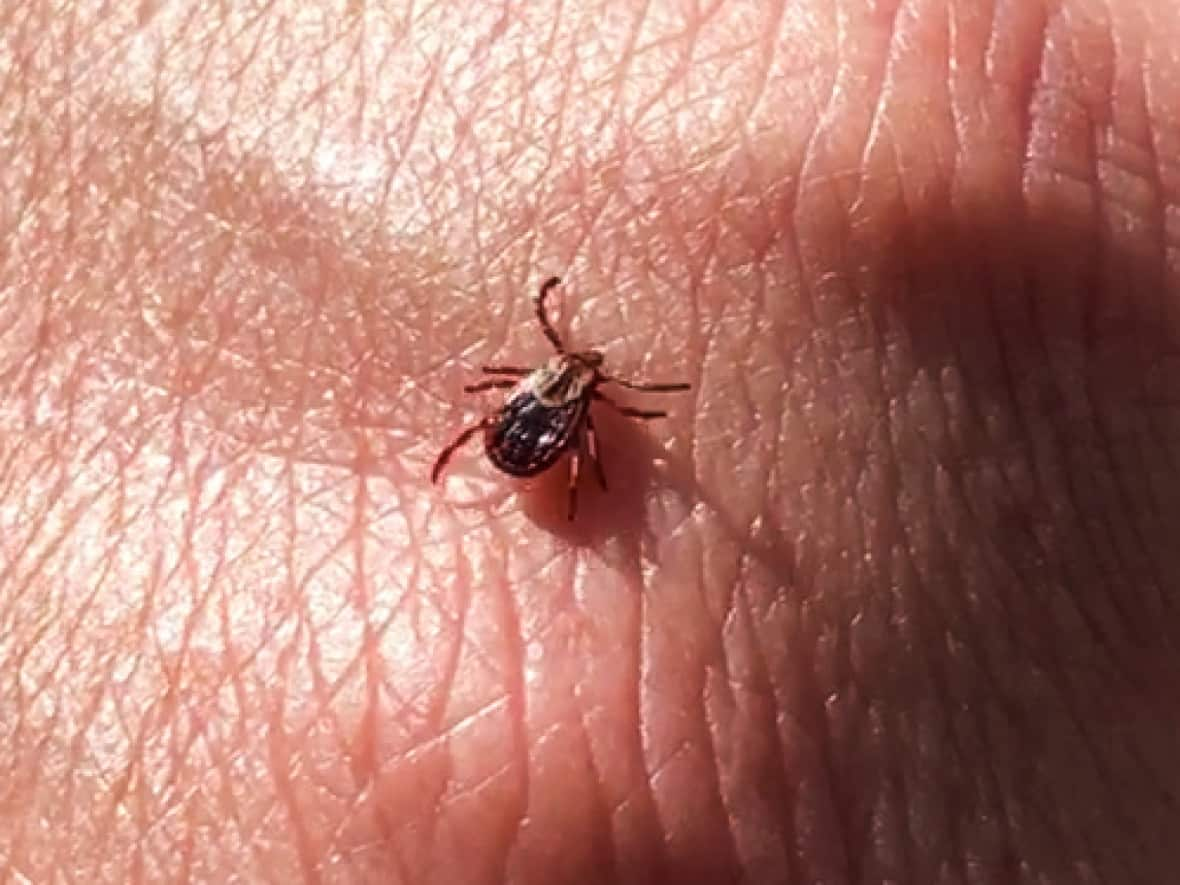Sask. an early adopter of app that identifies ticks, helps research pesky arachnids

If you've been out walking your dog, you may have noticed it's tick season again in Saskatchewan.
The bloodsuckers are the bane of both humans and their pets, but a University of Saskatchewan veterinary microbiology professor is part of a team gathering long-term data to better understand them.
The team is using an app to gather that information — and to share it with the public.
"We are hoping to give people better tools to be more aware about ticks — when they need to be on the lookout for them, how to protect themselves and their animals from them," said Emily Jenkins.
She and the U of S are part of a multi-provincial program to identify ticks, and they're asking people to help by uploading pictures to the eTick website or phone app.
The researchers will tell you what type of tick it is, and you'll be helping with their research in the process.
Jenkins says if you find a tick and want to know if it is dangerous, you can upload a couple of pictures to the eTick app and write a note saying where and when you came in contact with the tick.

"And if you can throw a ruler in there or something for scale, that does help us as well," she said.
They will usually be able to get back to you within 24 to 48 hours and tell which tick it is, and whether you should be concerned.
Saskatchewan was one of the early adopters of the eTick research, joining the program three years ago.
"So as we collect data, we're going to be able to answer questions like, 'Hey, when does tick season normally start? Is it moving? Where are the hot spots in the province?'" Jenkins said.
They have had fewer reports of ticks than usual so far this year, "probably because we didn't have the nicest spring, so it was a little later than usual," she said.
Jenkins said it's hard to say if there will be more or less than usual the number of ticks this season.
"They are so sensitive to their environments, and so they're a really good indicator of what's happening out there climate wise," Jenkins said.
Tick prevention
Ticks will usually be found in tall grass, brush and out in the woods. Since ticks don't fly, they latch onto people and other animals that contact them as they walk by.
Almost all of the ticks found in Saskatchewan are the American dog tick, which, unlike some others, does not carry Lyme disease.
Jenkins said there are black-legged ticks, also called deer ticks, found in the province that can carry the disease, but they're rare.

According to the provincial government, 969 ticks were identified in Saskatchewan in 2021. Only 15 were black-legged ticks.
"Nine of these were submitted for testing and none of them tested positive for the bacteria that causes Lyme disease," an April provincial news release said.
Jenkins said the black-legged tick "is not established here yet, but we are tracking very carefully to see if it does come up here with migratory birds."
In the province's April news release, Saskatchewan chief deputy medical health officer Dr. Julie Kryzanowski said taking precautions against ticks is the best way to reduce the risk of a bit.
The news release offered these prevention tips:
Wear light-coloured clothes so ticks can be easily seen.
Wear pants, long-sleeved shirts, and shoes that do not expose your bare feet.
Pull socks over your pant legs to prevent ticks from crawling up your legs.
Use insect repellents that contain DEET or icaridin. Apply repellent to clothes as well as your skin.
If you find a tick attached to your skin or on your pet remove it with fine-tipped tweezers and grasp the tick's mouth as close to the skin as possible, the news release advised.
Slowly pull upward and out with firm, steady pressure and be careful not to squeeze the body after removal.

 Yahoo Movies
Yahoo Movies 
